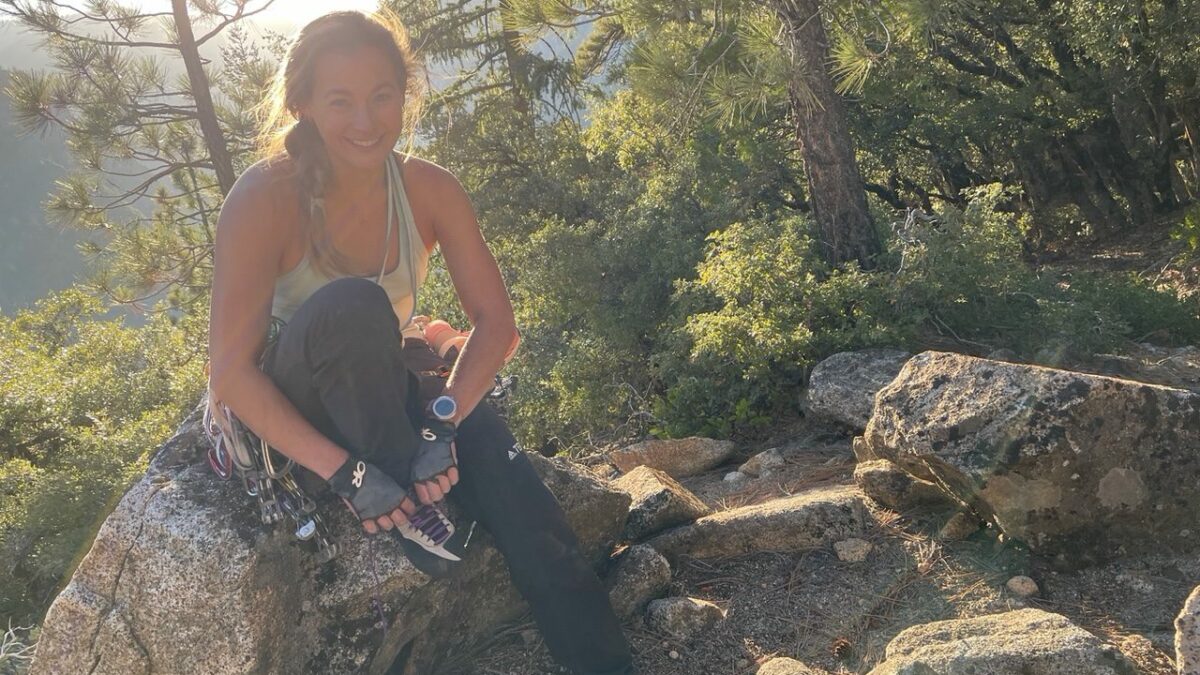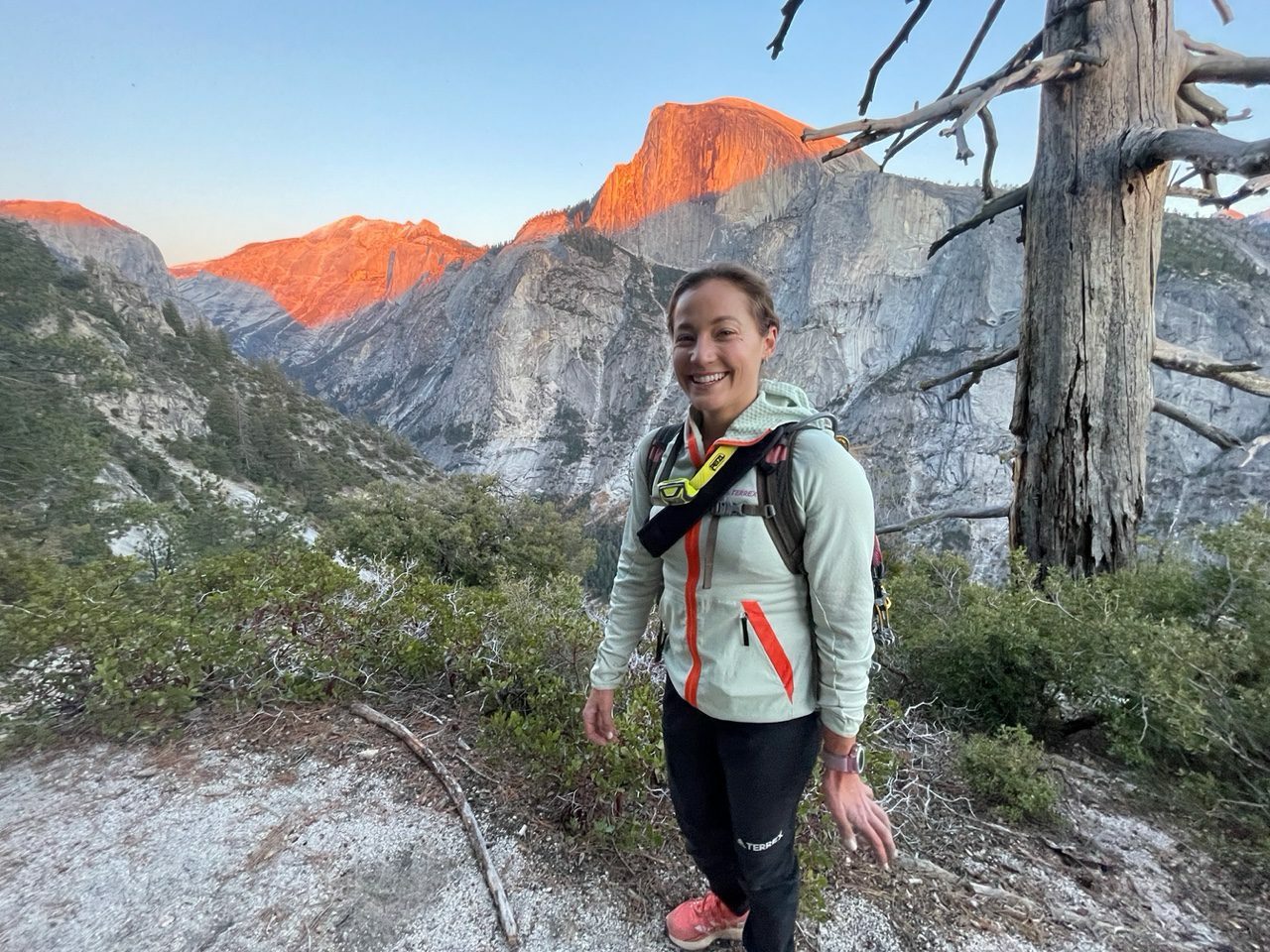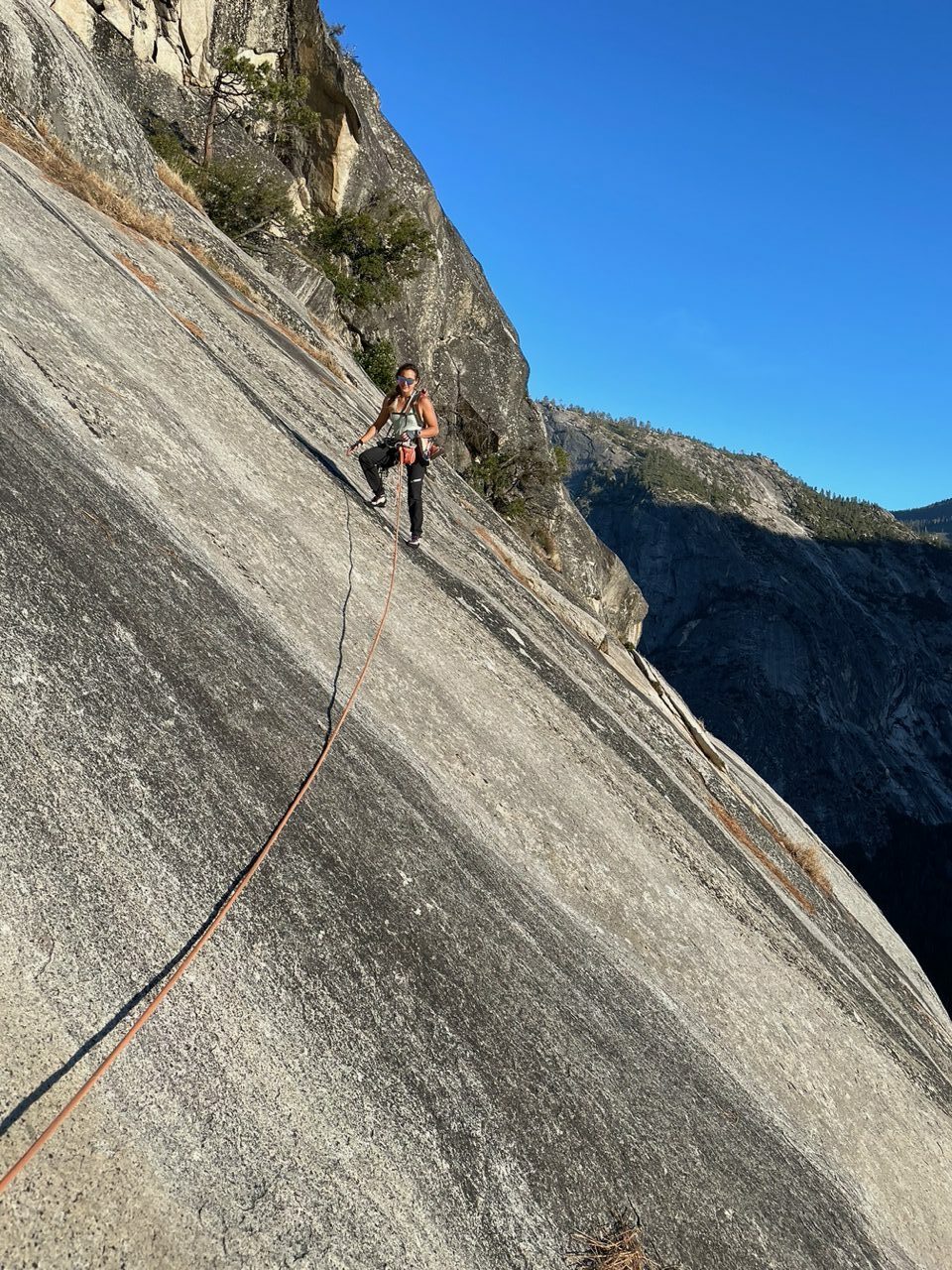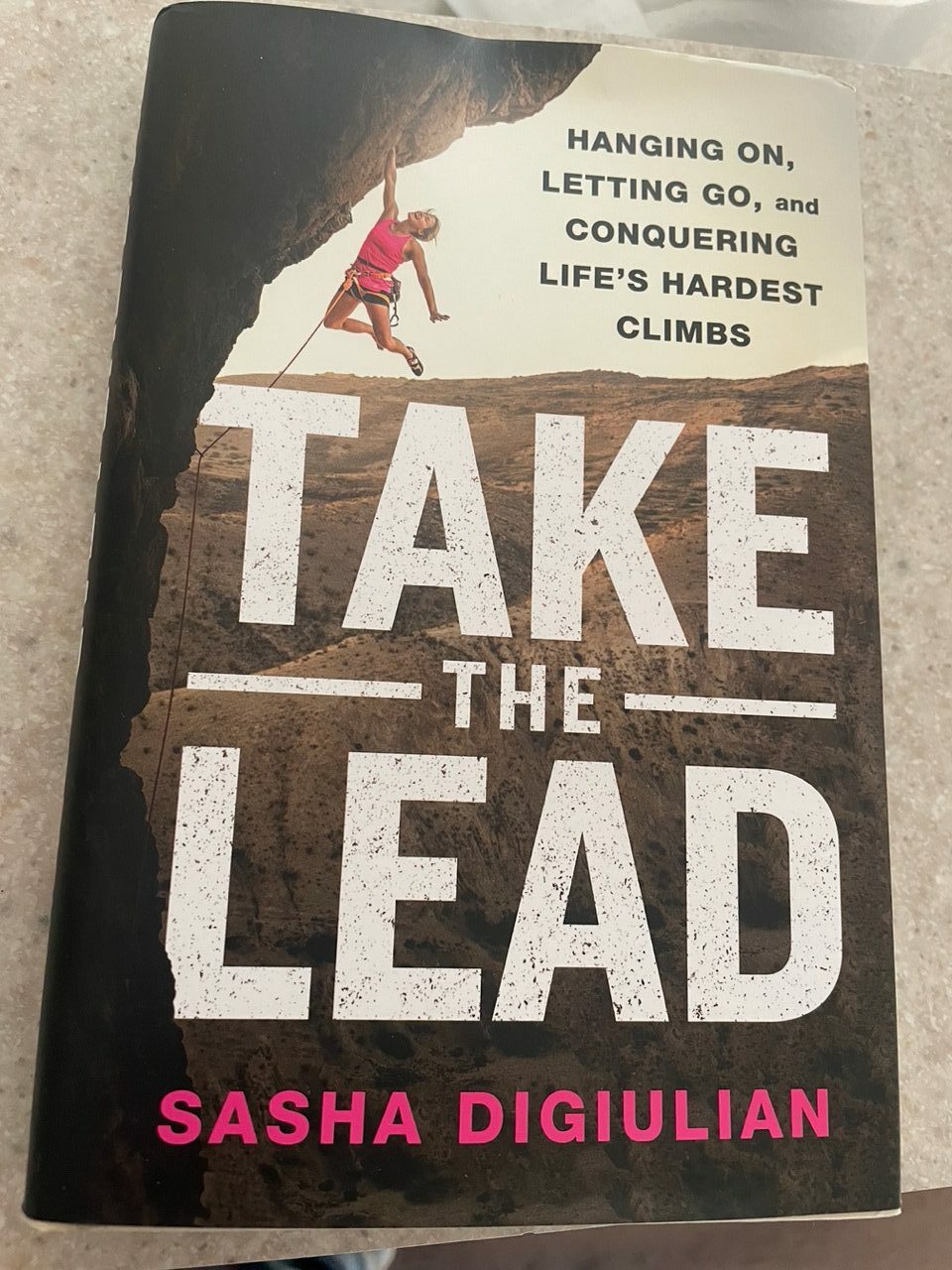Sasha DiGiulian: Scaling Heights and Advocating for Climbers’ Rights
The World Champion's journey from Virginia to the Halls of Congress
 Photo by: Chris Van Leuven
Photo by: Chris Van Leuven
We topped out the Royal Arches a mere hour before sunset. Sitting in the dirt on the summit of the 2,000-foot 5.7 A0, with the low light of autumn casting its rays over the park and Half Dome staring down at us from across the Yosemite Valley floor, the conversation flowed easily.
Though the route was behind Sasha Digiulian and I, that was only half the journey. Coming up was North Dome Gully, the circuitous, exposed climber’s path that took hours to bring us back to our cars. We took it slow and steady, and we often stopped to take in the view, snack on Send Bars, and eat vacuum-sealed chicken with sticks (my go-to).
Sasha told me about her memoir Take the Lead and her upcoming trip to Washington, D.C., where she was going to testify to Congress about the EXPLORE Act, which promotes outdoor recreation, supports new bike trails, improves access for sports (like fishing), streamlines permits, modernizes campgrounds and — Sasha’s forte — protects climbing on public land.
Her last-minute trip to Washington cut her trip to Yosemite short, where she came to take her big wall-free climbing to the next level. She plans to return in the spring.

“It all happened pretty quick,” she says. “Access Fund’s interim executive director Eric Murdock called me and asked me to come out there with Jessica Turner, the president of Outdoor Recreation Round Table, to testify to Congress about the EXPLORE Act, which Access Fund had been working on for a long time. They asked if I would be available to go and represent Access Fund and testify on Capitol Hill for them.”
On Nov. 28, Sasha flew back east to advocate for public lands, recognize their importance, and ensure they remain accessible for outdoor activities, including climbing.
She lobbied in cooperation with the Access Fund. By being a collaborative voice for outdoor users, Sasha amplified her voice to make a compelling case for the EXPLORE Act, which has bipartisan support in outdoor recreation legislation and that shows the outdoor industry’s economic impact.
“It’s really special to be a part of something bipartisan. I think there’s a lot of divides right now in our country, and seeing something unanimously supported across the aisle is special,” she says.
According to the EXPLORE Act one-pager, the outdoor user economic impact includes: $1 trillion annual gross economic output, five million jobs, and 2.2 per cent of the overall GDP.
“I’m excited to be a part of such a monumental bill,” she says. “I think it is a testament to how big and growing the outdoor industry is.”Regarding the $1 trillion number, “If you were to compare that to Big Pharma, it’s actually competitive,” she says.
On the Threat to Climbing from Proposed Policies
Sasha’s focus in D.C. was specifically on the impact of policies on climbing and fixed anchors proposed by the Forest Service and Park Service, which could restrict the use of fixed anchors in climbing. This issue is a significant concern for the climbing community in the U.S., as it could affect the safety and preservation of historic climbing routes.
To learn more about the threat of U.S. climbing areas, check out this story from Gripped from Nov. 23.
“The main thing that I was trying to convey in my testimony was why that would eradicate a lot of the historic routes that exist in wilderness areas and call into question a lot of safety that exists right now within climbing,” Sasha says.
“There’s a lot of misunderstanding, too. I’ve noticed some people say, oh, well, you know, get rid of fixed anchors, try trad climbing instead. And that’s wrong because areas including the Diamond and all the routes on El Cap, etcetera, would be affected.”
What Happens Next
There are two things at play. One is outlined in this passage from the Access Fund’s press release, which reads:
The National Park Service (NPS) and U.S. Forest Service (USFS) recently released draft recreation management directives that would overturn decades of precedent. The directives classify fixed anchors—the bolts, pitons, and slings that technical climbers have used to safely ascend and descend technical faces since well before Congress passed the Wilderness Act—as prohibited “installations” in Wilderness areas. If approved, the directives would apply to new and existing anchors. The public has 60 days to comment on the proposals.
As of Dec. 5 (today), there are 42 days left in the comment period.
“When I first heard about it, and then I learned more and more, I got really heated because it was like, how can people think this is a good idea?” says Sasha. “But the positive is this legislation within the EXPLORE Act would actually protect against it, and it would not be a threat.
National Park Service Director Chuck Sams says of the Authorization Process for Fixed Anchors in Wilderness draft: “The proposed guidance will help provide a consistent process for installing new or replacing existing fixed anchors in wilderness and ensure that we are managing these important areas for the benefit of current and future generations.”
Regarding the park service draft, “something within the proposal that’s really dangerous is it would also limit anchors’ maintenance, says Sasha. “So now, you know, people are allowed to go and check the status of an old anchor and re-bolt it if needed. If there’s this prohibition on new fixed anchors, it would also prohibit fixing old ones. So if they weren’t taken out, they could be like 30 years too old and then you have anchor failure. So it really doesn’t make a lot of sense.”
In other words, if the EXPLORE Act passes, which was presented to Congress on Nov. 22, Sasha tells me, the NPS and USFS draft will be a moot topic. “So I think that’s why, before the end of the year, it would be amazing for the bill to go through because it would render the proposal irrelevant,” Sasha says.
Learn more and comment here. The final day for comments is Jan. 16, 2024.
Back in Yosemite
In two days, Sasha will fly to D.C. (see above), But we’re here now, making our way down North Dome Gully. We’re through the manzanita, past the ball-bearing downclimb/hand-over-hand rappel that accesses the gully proper and are taking a moment to snack and put on our headlamps.
Sasha pulls out a few Send Bars, we take a swig of water, and she tells me about her memoir. She said she made it for climbers and non-climbers alike – she’s been on Oprah, after all — which is why it has a glossary of terms at the beginning. She wrote the title using dictated recordings published by St. Martin’s Press while balancing her work as a pro climber, founder of the production company Female Focused Adventures, spokesperson, speaker, and founder and CEO of Send Bars.

It started in 1999 at Sportrock Climbing Gym in Alexandria, Virginia. Then, at age 6, her parents rented an extra small harness. “It would be a few years before I would truly appreciate the importance of technique…but it felt as if my body already had an innate understanding,” she wrote.
She continues, talking about her early days, where she focused on indoor and outdoor climbing and splitting her time in Alexandria, Virginia, and Mont-Tremblant, Quebec, where her mother and grandmother are from. In Virginia, she climbed outdoors in the New River Gorge and Franklin. In Quebec, she met up with a guide who showed her the sport in a new way, where he showed her the routes at Val-David, which sat in a labyrinth of old-growth forests. She soon became obsessed with Val-David, and her fire for adventurous outdoor routes in new areas was ignited. But soon, she found herself back in the gym in Virginia, where the comp circuit took over her weekends for years. She was also on a winning streak.
“I spent so many days jamming my feet in tiny shoes that they never grew beyond size 4,” she tells me as we make our way through the darkness illuminated by our headlamps.
Her drive to win was not to just impress her dad but to show she could make a living at it. In 2004, with her dad in the audience, she won the Junior Continental Championships in Mexico City, and it clicked for her. She recalled, “I felt like the star player, not just some kid who likes to climb.”
After the win, her sponsors began to roll in, starting with Mad Rock. Sponsorships came with money, too, and she announced to her family, “I’m a professional climber now.” By age 13, she’d made it big, appearing in various magazines and continuing to clean up the climbing comp circuits. While in school, she felt like an outsider, but when out with her friends at the crags, “I felt on the same wavelength of the other climbers,” she wrote.

For college, she moved to New York City and attended Columbia University, earning her degree in creative writing.
I could continue, but that would mean giving too much of the book away.
Lynn Hill says, “Sasha demonstrates the strength of her vision as well as the discipline to do whatever is necessary to realize her goals and raise the bar for women.” Conrad Anker echoes that statement, adding, “Wherever you are or whatever sport you practice, there is wisdom in Sasha’s experience that can help you be the person you want to be.”
Take the Lead: Hanging On, Letting Go, and Conquering Life’s Hardest Climbs, $29.00, is available now.


